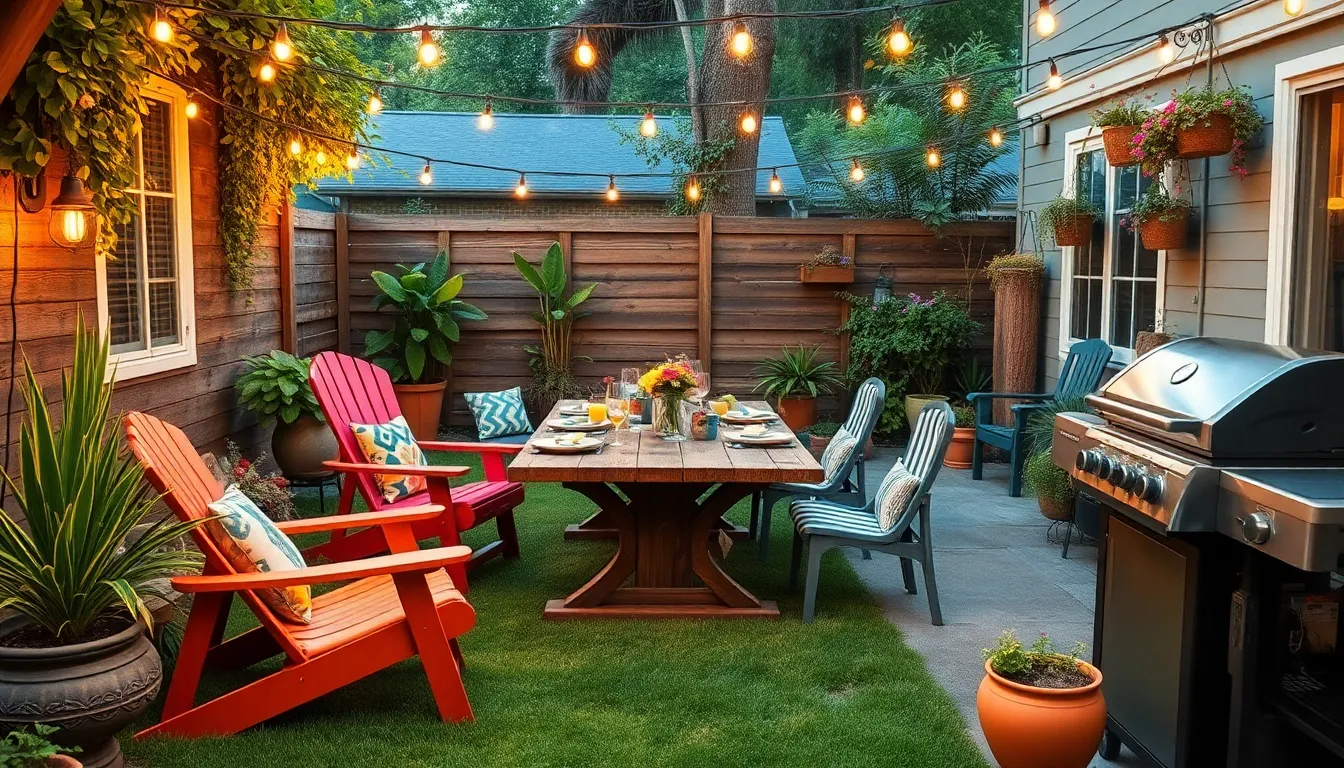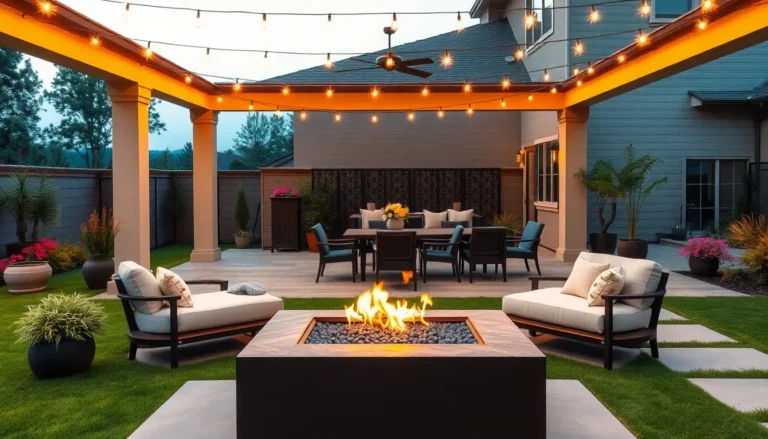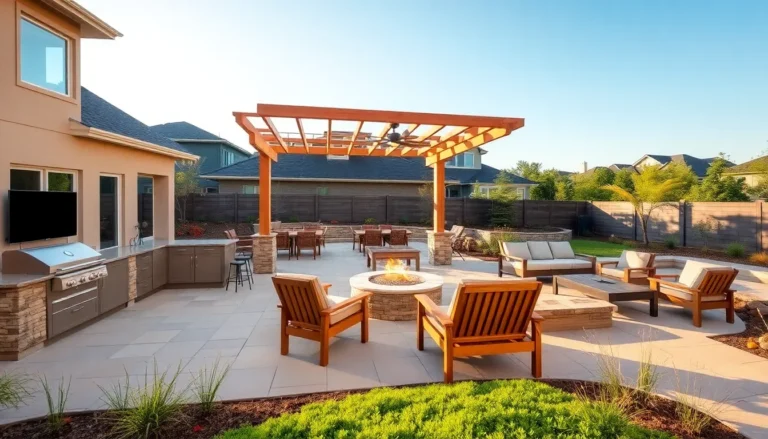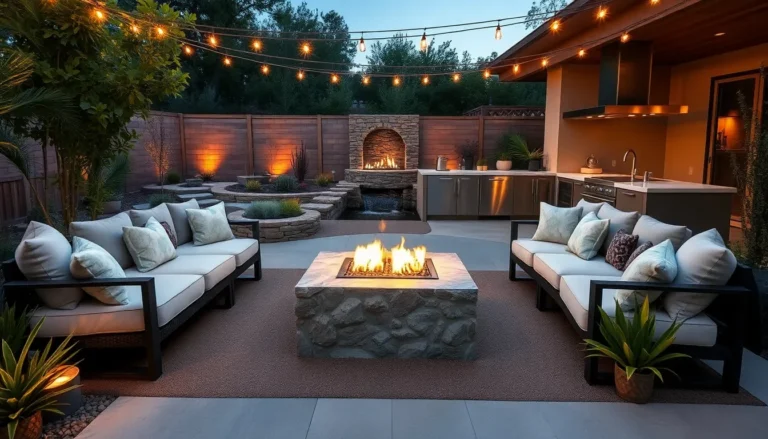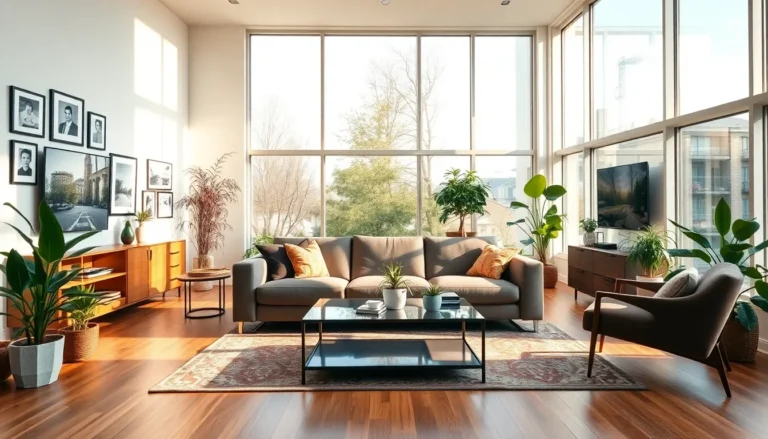Table of Contents
ToggleTransforming a bland backyard into an outdoor entertaining oasis is easier than one might think. Imagine hosting summer barbecues, cozy evening gatherings, or spontaneous dance parties under the stars—all without the hassle of cleaning up your living room. With a little creativity and some practical tips, anyone can create an inviting space that’ll have friends and family begging for an invite.
Planning Your Outdoor Entertaining Area
Creating an inviting outdoor entertaining area begins with thoughtful planning. Careful consideration of available space and personal needs leads to an inviting atmosphere.
Assessing Your Space
Measuring the backyard provides a clear understanding of dimensions. Identify any existing features like trees, patios, or fences that can impact the layout. Consider sun exposure to maximize comfort during gatherings. Make note of the terrain, as uneven ground may require leveling or additional landscaping. Visualizing the area using string or stakes can help outline potential setups, allowing for creative configurations.
Defining Your Needs and Preferences
Identifying the purpose of the outdoor space assists in effective planning. Determine if hosting large gatherings or intimate dinners aligns with personal preferences. Prioritizing features such as seating, dining areas, and cooking stations enhances functionality. Selecting styles like rustic, modern, or tropical helps to create a cohesive look. Consider storage solutions for items like cushions and grill tools to maintain organization. By clarifying these needs, it creates a tailored outdoor area that reflects individual tastes, encouraging frequent use.
Choosing the Right Location
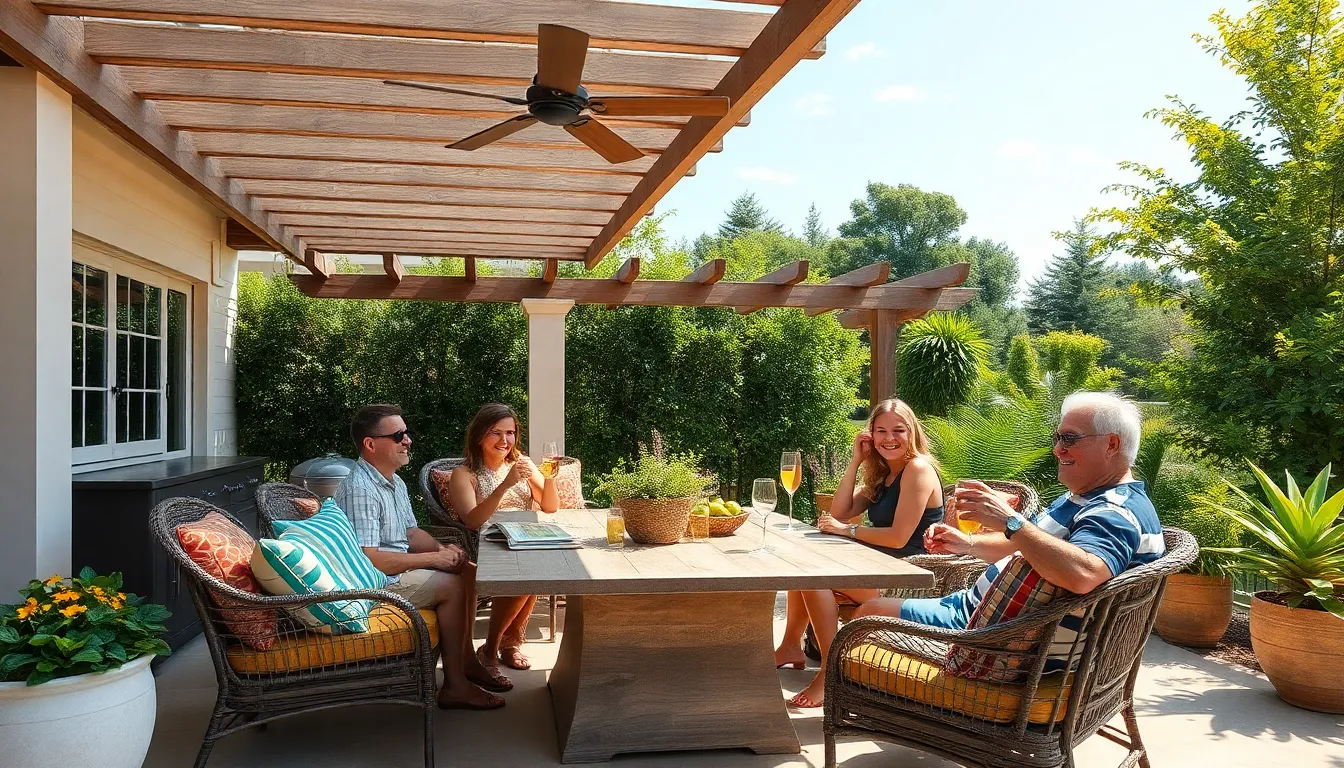
Selecting the ideal location for an outdoor entertaining area significantly impacts its functionality and enjoyment. It balances practical aspects with personal preferences.
Sunlight and Shade Considerations
Sunlight exposure determines comfort levels during gatherings. Morning and afternoon sun can create a warm atmosphere but may also cause discomfort. Trees or pergolas provide natural shade, enhancing the experience. Assessing the sun’s path throughout the day allows for strategic placement of seating and dining areas. Keeping in mind seasonal changes, consider how shade will shift with the sun. Adjusting the layout based on sunny versus shaded spots results in a more inviting space.
Proximity to the House
Proximity to the house enhances convenience for hosting events. Easy access to the kitchen simplifies food and drink service. Positioning the area within a reasonable distance reduces the need for excessive movement while entertaining. Guests appreciate close access for using bathrooms or getting supplies. A clearly defined pathway or deck links the outdoor area to the home, improving flow. Prioritizing this proximity fosters a seamless entertaining experience, encouraging frequent use of the outdoor space.
Selecting Essential Features
Creating an inviting outdoor entertaining area requires careful selection of essential features that cater to comfort and practicality.
Seating Options
Comfortable seating enhances relaxation and socializing. Prioritize a mix of seating arrangements like lounge chairs, benches, and outdoor sofas. Arranging seating in a circular pattern encourages conversation. Include cushions for extra comfort and style. Consider durable materials that withstand outdoor conditions. Options such as weather-resistant wicker or metal provide longevity. Add a few movable chairs for flexibility during gatherings. Ensure there’s enough seating for guests while maintaining ample space for movement.
Dining Areas
A defined dining area serves as the central hub for meals and gatherings. Choose a table size that accommodates the intended number of guests. Tables with sturdy construction and weather-resistant finishes offer durability. Complement the dining area with options like umbrellas or a gazebo for shade. Elevate the dining experience with comfortable chairs and decorative place settings. Place the table near the food preparation area to streamline service during events. Consider adding a bar cart for easy access to drinks and snacks.
Lighting Solutions
Strategic lighting sets the mood for evening gatherings. Incorporate various light sources such as string lights, lanterns, and pathway lights. Prioritize warm tones to create a cozy atmosphere. Install dimmable fixtures for versatility and adjust the brightness as needed. Use solar-powered lights along walkways for safety and sustainability. Focus on highlighting key features like seating areas and dining spaces with accent lighting. Consider fire pits or outdoor fireplaces for warmth and ambiance, enhancing the overall experience.
Adding Personal Touches
Creating a unique outdoor entertaining space involves adding personal touches that reflect individual styles and preferences. Customized decor, vibrant colors, and personal artifacts enhance the inviting atmosphere for gatherings.
Decor and Style
Select decor items that resonate with personal tastes. Opt for outdoor-friendly textiles, such as colorful cushions and throw blankets, to add comfort and warmth. Choose decorative lighting, like string lights or lanterns, which not only illuminates the area but also sets a relaxed mood. Integrating artwork, such as sculptures or garden art, transforms empty corners into eye-catching focal points. Prioritize themes that align with the overall aesthetic, whether it be modern, rustic, or eclectic.
Incorporating Greenery
Introduce plants to create a lively atmosphere. Select a variety of potted plants, shrubs, or flower beds to enhance visual interest. Climbing plants can adorn trellises or pergolas, providing added shade while introducing vibrant colors. Consider herb gardens for culinary benefits and scents that enhance outdoor cooking experiences. Flowers not only beautify the space but also attract pollinators, enhancing the natural ambiance. Prioritizing greenery fosters a serene environment, encouraging relaxation during gatherings.
Maintaining Your Outdoor Space
Maintaining an outdoor entertaining area ensures enjoyment and longevity. Regular upkeep helps keep the space inviting and functional for gatherings.
Seasonal Maintenance Tips
Seasonal maintenance involves specific tasks for optimal outdoor space care. In spring, inspect patio furniture for wear and clean surfaces. During summer, check for pests and regularly water plants to maintain vibrant greenery. Fall calls for clearing leaves and prepping furniture for winter storage. Winter involves protecting outdoor furniture from harsh weather and checking lighting for any necessary repairs. Consistent attention to these tasks extends the life of the outdoor area.
Safety Considerations
Safety considerations play a vital role in outdoor space enjoyment. Ensure pathways remain clear to prevent tripping. Install adequate lighting for evening gatherings, highlighting steps and seating areas. Regularly check grill equipment and electrical installations for safe operation. Using non-slip rugs on decks enhances safety, especially during inclement weather. Creating a well-maintained outdoor space fosters a secure environment for all guests.
Creating an outdoor entertaining area is all about blending comfort with personal style. With thoughtful planning and attention to detail, anyone can craft a space that invites friends and family to gather and enjoy. Prioritizing essential features like seating and lighting enhances the atmosphere while adding personal touches makes it uniquely theirs.
Regular maintenance ensures the area remains inviting and safe for gatherings throughout the year. By focusing on these aspects, one can transform a simple backyard into a vibrant hub of entertainment that’s ready for any occasion. Embrace the outdoors and make lasting memories in a beautifully designed space.

